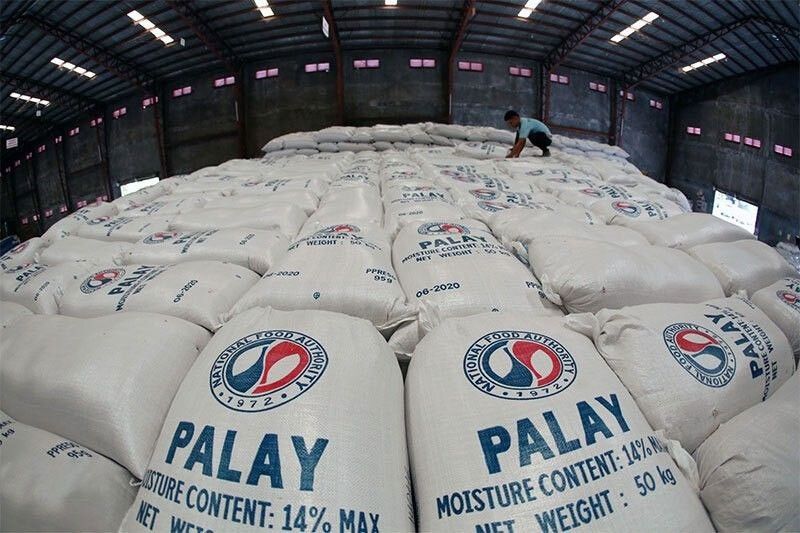President Marcos formalizes rice tariff cut through EO 62

MANILA, Philippines — The government has lowered the tariff on imported rice from 35 percent to 15 percent until 2028, which President Marcos’ economic managers believe could bring down the price of the staple to P29 a kilo.
Executive Order (EO) 62, signed by Executive Secretary Lucas Bersamin by the authority of the President on June 20, modified the nomenclature and rates of import duty on various products, including rice, for the period 2024-2028.
The levy on rice, which covers both in-quota and out-quota rates, is subject to review every four months based on the EO.
“As may be necessary and/or as may be directed by the President, the comprehensive and/or specific MFN (Most Favored Nation) tariff listed…shall be subject to periodic review,” the order read.
At a Palace briefing earlier this month, Socio-economic Planning Secretary Arsenio Balisacan said the move was seen to bring down the price of rice to P29 a kilo.
“The Department of Agriculture (DA) is aiming for a reduction (to) P29 per kilo, at least for the poor, because we will complement this tariff reduction with the direct subsidies to the poor and vulnerable so that at least they could access the food,” Balisacan said.
The Philippine Statistics Authority (PSA) reported a substantial decrease in the overall rice inflation last month from 23.9 percent in April to 23 percent in May as well as a slight decrease in its retail prices.
According to the DA price watch, well-milled rice sold in public markets during the last day of May stood at P48 to P55 per kilo, while regular milled rice was priced around P45 to P52 per kilo.
Marcos’ campaign promise is to reduce the price of rice to P20 a kilo.
Under the same EO, Marcos extended the effectivity of the lower rates on pork, mechanically deboned meat (MDM) of poultry and corn.
Pork imports have an in-quota tariff of 15 percent and out-quota rate of 25 percent, while the tariff on poultry MDM would stay at five percent until 2028.
The tariff rates on corn would remain at five percent for in-quota shipments and 15 percent for out-quota volume.
Under EO 62, the tariff rates on rice, pork, poultry MDM and corn would automatically revert to their original higher rates by Jan. 1, 2029.
Furthermore, Marcos approved the higher tariff on imported salt of nine percent from its present rate of one percent. However, the higher rate shall take effect once Republic Act 11985 or the Philippine Salt Industry Development Act becomes effective. The law is still awaiting its implementing rules and regulations.
However, Sen. Imee Marcos has noted that only rice exporters are benefitting from the reduced tariff on imported rice and not the Filipino rice consumers.
The senator expressed concern that rice prices in the market do not automatically decrease with the reduction in tariffs on imported rice. Exporters are taking advantage of the high demand in the country, leading to higher selling prices of rice in the Philippines.
The Samahang Industriya ng Agrikultura described EO 62 as a “complete reversal” of the country’s “aspiration for food self-sufficiency” and a “catastrophe” for farmers.
Meanwhile, former agriculture secretary Leonardo Montemayor said that a temporary restraining order (TRO) will be filed against Executive Order 62 on the reduced tariff on imported rice before the Supreme Court after President Marcos formally signed the EO implementing the 15 percent tariff on outsourced grains.
He added that among the grounds to be raised on the TRO include the failure to follow legal process amid the lack of consultations of the Tariff Commission and the constitutionality of EO 62.
He said that farmers’ groups are aiming to file the TRO next week.
He warned that the reduced tariff on imported rice will result in the drop in the farmgate price of palay between P3 and P4 per kilo.
“The fullest impact will be felt in the last quarter as it is the main harvest. So, in terms of the total potential losses to rice farmers, on a yearly basis, it is P80 billion, if you compute it per semester, it is P40 billion,” he added.
Aside from the P80 billion in losses of farmers, at least P28-billion annual revenues will be lost because of the reduced tariff.
Montemayor said that protest actions will also be staged to oppose EO 62.
Palay price
The farmgate price of palay dropped to as low as P17 per kilo amid the limited procurement of the National Food Authority (NFA), according to the farmers’ group Federation of Free Farmers (FFF).
FFF national manager Raul Montemayor cited reports the group received from farmers that the palay prices in parts of Central Luzon dipped to P17 to 18 per kilo.
Dry and clean palay ranged between 23 and P30 per kilo, depending on the prevailing market price in a given province.
Previously, the NFA bought dry and clean palay for P19 to P23 per kilogram.
- Latest
- Trending































